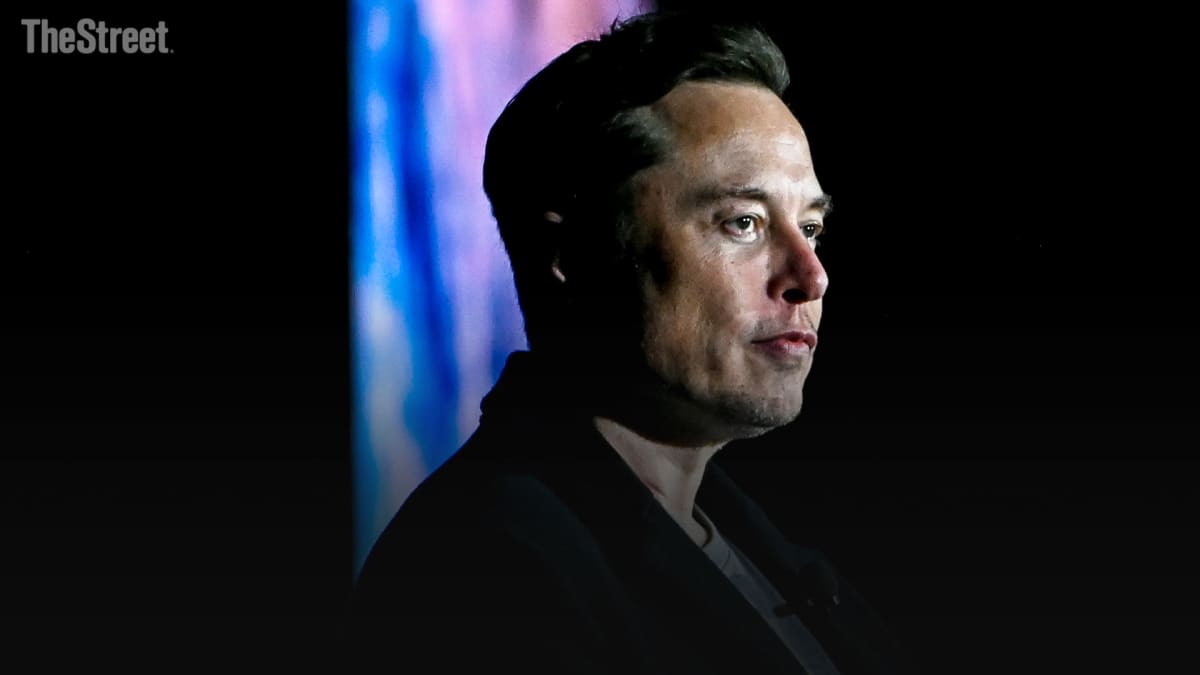
Elon Musk is known for making wild promises and setting outrageous goals. It's one of his detractors' biggest criticisms.
But it is also one of the visionary entrepreneur's driving forces. He thrives on setting goals that society broadly deems unattainable. He loves nothing more than having his back to the wall, the odds against him.
This was the case when he transformed the automotive industry with Tesla (TSLA). During the financial crisis, when Musk tried to convince governments and his rivals that tech-packed electric vehicles were the future of the car, he was ridiculed.
Changing the Auto and Space Industries
At the time General Motors (GM) and Chrysler (STLA) had just filed for Chapter 11 bankruptcy, the economy was in a black hole, and the idea that consumers were going to change their habits and give a second look to electric vehicles -- the development of which requires billions of dollars of investment -- was laughable.
But years later electric vehicles took hold. Public authorities and car manufacturers now swear by green vehicles, and consumers increasingly adopt them. Tesla, a pioneer in EVs, is now rewarded by investors, who have currently made it the world's seventh largest company by market value, $656 billion at last check. The disruptor earned $12.6 billion last year, more than GM and Ford combined.
It's important to remember that until three years ago, Tesla was derided by rivals and financiers, who predicted that the automotive disruptor would almost certainly collapse.
The group at the time was struggling to increase production rates of the Model 3, the entry-level sedan with which the company wanted to reach the huge market of average car buyers.
Musk often reminds people that Tesla had verged on bankruptcy between mid-2017 to mid-2019.
"Closest we got was about a month. The Model 3 ramp was extreme stress & pain for a long time — from mid 2017 to mid 2019. Production & logistics hell," Tesla's CEO said on Nov. 3, 2020.
Musk also challenged himself to transform the space industry by advocating the adoption of reusable launch systems, rockets that can be used multiple times to carry people, satellites and other payloads to space.
Delivering payloads into space is an expensive proposition, and the debate between reusable rockets and expendable rockets has been a central one for the industry. Single-use, or expendable, launch vehicles are the most common today. They are discarded after they complete their flights.
SpaceX (Falcon 9) and Jeff Bezos's Blue Origin (New Shepard) are the pioneers of reusable rockets. These rockets can be launched, deliver payloads to space, land safely back on Earth and be available again.
Proponents of this technology say it could significantly lower the price of rocket systems and unleash new opportunities like space tourism.
China, for example, could shift to fully reusable super heavy launchers.
'Possible' Humans on Mars in 5 Years
Musk has just set himself an ultra-ambitious new goal that will make his rivals jump. The billionaire promises that in five years, humans will be able to live on Mars, which he has vowed to colonize in our time.
It all started with a thread on Twitter during a static fire test of Booster 7, which is the main stage of the Super Heavy launcher Starship, on Feb. 9.
Musk began by making an innocuous comment, one of those he has been making for several months to keep the dream of living on the red planet intact in the collective imagination.
"One day, Starship will take us to Mars," the Techno King, as he's known at Tesla, wrote, with a video of the test.
Starship must eventually enable transport of 100 passengers on long interplanetary flights, in particular to the Moon and Mars, the billionaire had said.
"Elon, when do imagine a human existence upon Mars?" a Twitter user asked him.
The entrepreneur replied with his usual brash approach.
"I must admit to being congenitally optimistic (SpaceX & Tesla wouldn’t exist otherwise)," He said. "But I think 5 years is possible and 10 years is highly likely."
The announcement caused amazement on social networks.
"Five years is a LONG TIME. 2028. no. we can do this by 2024," one user said in awe.
"5 - 10 years ... that's simply diabolical!" another user added.
"Humanity is so lucky for your optimism," another user said.
The Starship might finally make its test flight after several delays, according to Musk.. Initially planned for 2021, SpaceX was forced to postpone it several times due to development difficulties, which is not surprising for a launcher.
In addition to technical issues, SpaceX has not received a license from the Federal Aviation Administration.
But Booster 7 has been successfully tested, as has Ship 24, the upper stage of Starship. These two prototypes were subjected to a variety of ground tests, which went well, as well as various static tests.
Ship 24 has simultaneously tested all its engines (six in total). The Booster 7 prototype has simultaneously tested as many as 14 of its 33 engines.







